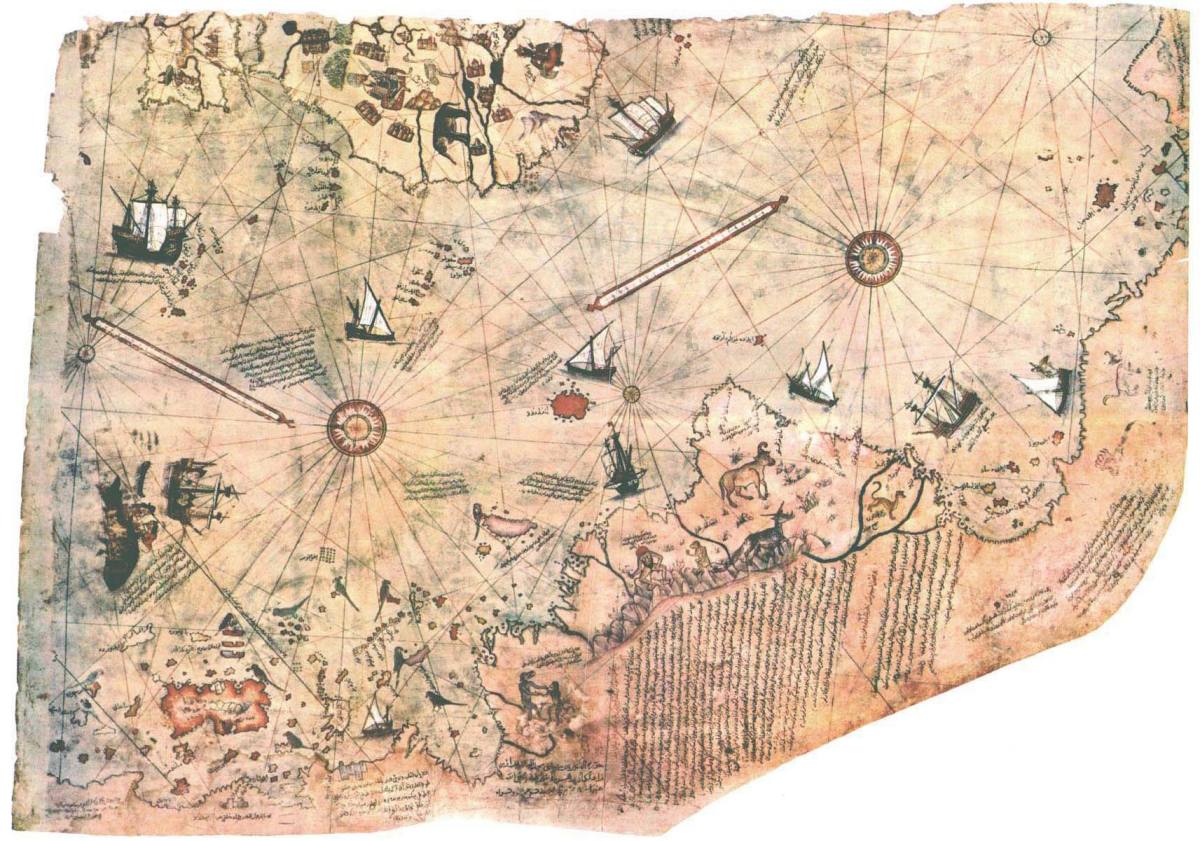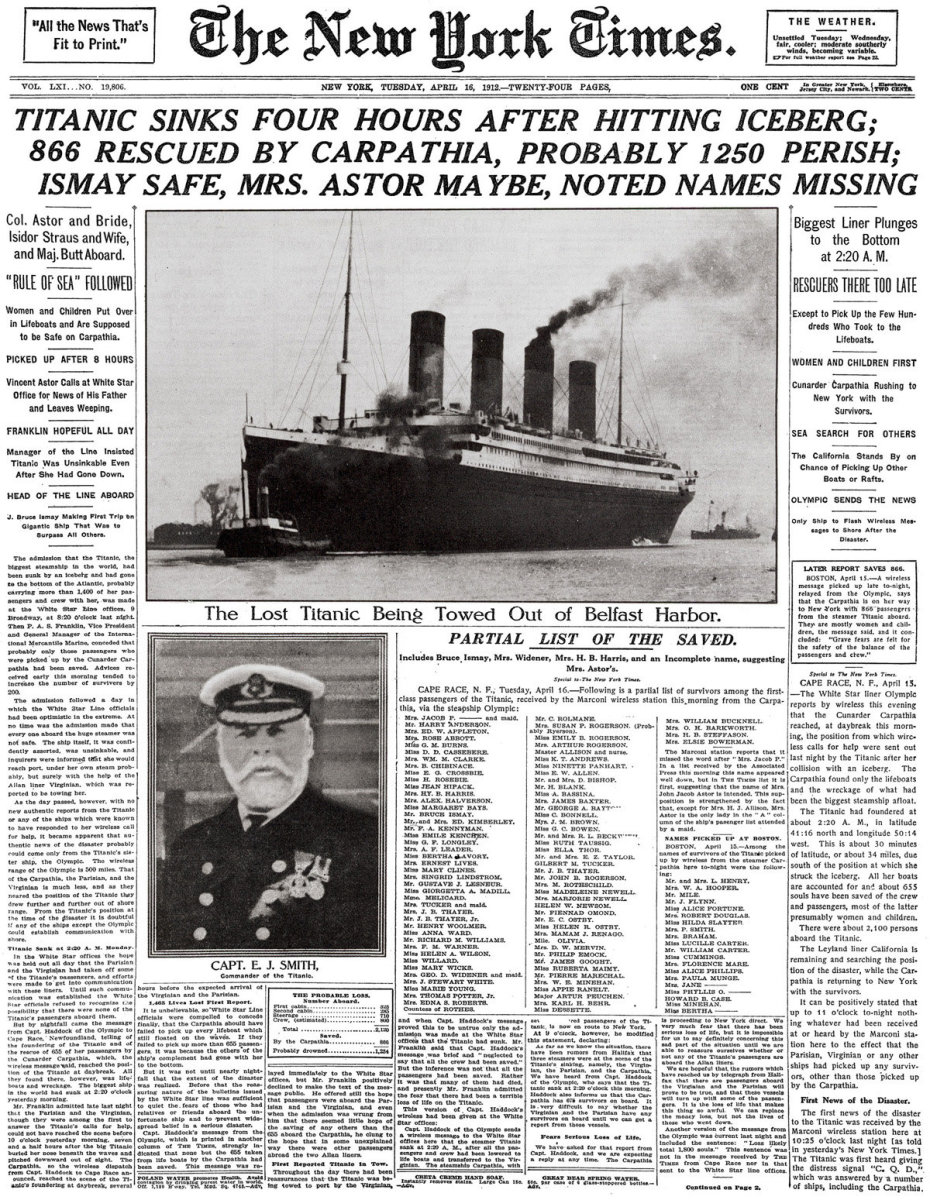Nostalgia - What Was It Really Like in the Good Old Days?
Introduction
I originally started this list over a decade ago after hearing certain conservative talk show hosts talking about how great the "good old days" were, in comparison to the Clinton era presidency. I felt the claims they made (such as how cheap everything was, how much easier daily life was, how our government was more efficient, and fellow citizens were more trustworthy) were a bit exaggerated. The original list supplemented an online textbook that I wrote for my US Geography class.
Over time I have updated the list as I came across new items and I posted it at a couple of times blogs I used to write. Well, now I wanted to update it even more, so here it is on Hubpages! -- Alan
Comparing Dollars Over Time
In this Hubpage, I use the Consumer Price Index (CPI) to compare US currency values from past time periods. This is one of the most conservative approaches, meaning it estimates the smallest changes over time. Most other techniques would show a much larger amount for past dollar values when compared to today (i.e., the past would be much more expensive)..
Click here to see seven different ways how high these numbers could go with other approaches.
The USA in the Early 1900s
The Great Heat Wave of 1896 - (audio) - Can natural disasters change history and influence politics? This New York City event claimed nearly 1300 lives and shaped early 20th Century America.
Causes of Death in US in 1900 and 2010 - comparison chart
1900 - 95% of births were at home
- 98% of meals were eaten at home (compared to only 50% by 2010) [more...]
1905 - 100 workers a day died on the job due to poor working conditions
1905 - Recessions/depressions were commonplace, about every 10 years in the late 1800s and early 1900s
1905 - Child labor in US factories was commonplace; there were no laws against it
1907 - Infant mortality = 9.99% (about 10% of all children died at before they reached 1 year of age)
1907 - Life expectancy - for Men = 45.6 years - for Women = 49.9 years
--- i.e., most of the people who were the same age as you were dead by the time you were 50 years old
1907 - Biggest causes of death: #1 = pneumonia and flu, #2 = tuberculosis, #3 = heart disease, #4 = diarrhea (a different sources flipped #3 and #4, and had #5 = stroke)
1907 - Chicago completes first (and only) modern sewage system in the US
1908 - Philadelphia completes first (and only) clean water system in the US
1906 - First radio voice broadcast from a US based station to specially equipped ships in the Atlantic ocean. Radio would not become fairly common until a decade or two after this (depending on how you define "common").
1905 - Icehouses were commonly used to store perishable food and as suppliers of blocks of ice for home ice boxes.
THE USA IN 1907
- Only 14% of the homes in the U.S. had a bathtub.
- Only 8% of the homes had a telephone.
- A 3 minute call from Denver to New York City cost $11 ($250.33 in 2007 based on CPI)
- There were only 8,000 cars in the U.S., and only 144 miles of paved roads.
- The maximum speed limit in most cities was 10 mph.
- Alabama, Mississippi, Iowa, and Tennessee were each more heavily populated than California . With only 1.4 million people, California was only the 21st most populous state in the Union .
- The tallest structure in the world was the Eiffel Tower.
- The average wage in the US was 22 Cents per hour ($5.01 in 2007 based on CPI).
- The average U.S. Worker made between $200 and $400 per year. ($4552 and $9104 in 2007 based on CPI)
- A competent accountant could expect to earn $2000 ($45,520) per year, a dentist made $2,500 ($56,900) per year, a veterinarian $1,500 ($34,140) per year, and a mechanical engineer about $5,000 ($113,800) per year. (in 2007 dollars based on the CPI)
- More than 95% of all births in the U.S. took place at home.
- 90% of all U.S. Doctors had no college education. Instead, they attended so-called medical schools, many of which were condemned in the press and the government as 'substandard.'
- Sugar cost four cents a pound. (91 cents a pound in 2007 CPI)
- Eggs were fourteen cents a dozen. ($3.19 a dozen in 2007 CPI)
- Coffee was fifteen cents a pound. ($3.41 cents a pound in 2007 CPI)
- Most women only washed their hair once a month, and used Borax or egg yolks for shampoo.
- Canada passed a law that prohibited poor people from entering into their country for any reason.
- The American flag had 45 stars. Arizona, Oklahoma, New Mexico, Hawaii, and Alaska hadn't been admitted to the Union yet.
- The population of Las Vegas , Nevada was only 30.
- Crossword puzzles, canned beer, and ice tea hadn't been invented yet.
- There was no Mother's Day or Father's Day.
- Two out of every 10 U.S. adults couldn't read or write.
- Only 6% of all Americans had graduated from high school.
- Marijuana, heroin, and morphine were all available over the counter at the local corner drugstores. Back then pharmacists said, 'Heroin clears the complexion, gives buoyancy to the mind, regulates the stomach and bowels, and is, in fact, a perfect guardian of health.'
- There were about 230 reported murders in the entire U.S,
The World in the Early 1900s in Color Photos
A fascinating look at 66 Colorized Photos taken around the world in the early 1900s. Click this link:
http://acidcow.com/pics/9671-early-1900s-in-color-66-pics.html
The USA in the 1920s
1921-27 - First vaccines for Diptheria, Whooping cough and Tuberculosis
1927 - Home refrigerators start coming into widespread use for first time, although home delivery of block ice for ice boxes continued until about 1960
1926 - NBC radio broadcasting company founded; 1927 - CBS radio founded (but no TV until the late 1930s)
Also checkout: Life Before Social Security - by Richard Paul - audio interview on Morning Edition, March 30, 2005 · Many believe that Social Security helped eliminate poverty among the elderly. But existence without the program was not necessarily all that terrible. A look at what life was like before Social Security was created.
The USA in the Mid-1900s
Home electronics
In the early 1960s, the color TV was a new marvel. A good one cost around $400 in 1965, which was a princely sum (worth about $2,300 in current dollars). Still, RCA's annual unit sales rose from 90,000 in 1959 to more than 1 million five years later.
By 2003, flat-screen plasma TVs are the object of many desires. A 42-inch Sony cost $6,000 at Best Buy recently, and aficionados can pay twice that for bigger screens with more bells and whistles. A 50-inch model from Samsung cost $8,000 -- nearly four times as much as those early color TVs.
By 2007 a 42" flat screen TV cost lest that $1000 on sale.
There was no Internet, of course, until the 1970s and 1980s.
Real Estate
According to the National Association of Realtors, the median price of a U.S. house in 1968 was $20,100. In 2003, it was about $170,000. Using inflation-adjusted dollars, that's a 60 percent increase.
In the early 1960s, a four-bedroom house in one middle-class New Jersey suburb sold for $19,000. In 2002, the same house sold for more than 20 times that figure.
In the 1960s, a family was said to be "rich" if they bought a home for $50,000, which converts to $265,000 in 2003 dollars -- far below the modern norm in many leafy suburbs on the East or West coasts.
Travel
In the 1960s, the jet engine opened up previously unheard of travel possibilities. Americans started flying to Europe in ever-rising numbers. By 2003, Paris is passé. To be well-traveled means to have visited exotic locations. Scads of companies now sell cruises to Antarctica. Departing from the tip of South America, rates begin at around $3,500, plus the cost of getting there.
Fewer than 4,000 people a year visited the Galapagos Islands in the 1960s. By 2003, Darwin's favorite archipelago attracts more than 60,000 guests annually, at costs ranging from a few thousand dollars to $35,000 or more for a chartered private yacht.
Even Mt. Everest -- defined as the most remote place on earth before Edmund Hillary and Tenzing Norgay climbed it in 1953 -- has had more than 1,200 people reach its peak. One "elite trek" costs about $6,000 to get to the base camp, plus equipment to make the ascent. In 2007, over 500 people climbed Mt Everest, a record year.
Automobiles
In the 1960s, many upper-middle-class motorists aspired to own elegant sedans. The 1965 Lincoln Continental had a sticker price of $6,166, about $36,000 in current dollars. The Continental is no longer produced, but a good substitute might be the Lexus LS-430. Manufacturer's suggested retail price in 2003: $55,700, before options.
Health
1945 - First major antibiotic, Penicillin, becomes widely available
1945 - First flu vaccine introduced
1957 - Life expectancy - for Men = 66.4 years - for Women = 72.7 years by 2007 - Men = 75.5 years, Women = 80.7 years
1957 - Infant mortality = 2.63% (similar to or worse than many of the less developed countries in Asia and Latin America today) by 2007 = 0.637% (or 6.37 deaths within the first year of life per 1000 live births; 41 countries have lower/better rates than the US)
1957 - Biggest causes of death: #1 = heart disease, #2 = cancer, #3 = stroke, #4 = accidents (similar to today)
1960 - 97% of births are in hospitals
1965 - Medicare and Medicaid signed into law
The USA (and UK) in the Late 1900s
Within many of our lifetimes ... but so much has changed!
- 22 Everyday Things that became Obsolete in the 21st century - Not all of these are obsolete, as yet, but an interesting list nonetheless.
- The Internet? Bah! - Hype alert: Why cyberspace isn't, and will never be, nirvana - a 1995 Newsweek article about why the Internet will never achieve the claims by its advocates. - AND - A video from 1994 in which NBC's Today Show hosts ask "What is the Internet?" - Yes, not too long ago in a land not that far away, there was no Internet...
The Most Influential Gadgets for Each of the Past 100 Years (published in 2013)
Source: http://www.dailymail.co.uk/sciencetech/article-2449468/Sony-Walkman-zip-Past-centurys-100-inventions.html ?? HOW MANY HAVE YOU OWNED OR USED ??
1913 The zip
1914 Motorised movie cameras
1915 Pyrex
1916 Electric power drill
1917 Radio tuners
1918 The superheterodyne radio circuit
1919 The pop up toaster
1920 The hairdryer
1921 The modern lie detector
1922 Electric kettle
1923 Self-winding watch
1924 Loudspeaker
1925 Modern day can opener
1926 Tevelox robot
1927 Aerosol can
1928 Baird Television Department Company television
1929 Car radio
1930 Jet engine
1931 Electric razor
1932 Electric can opener
1933 The Teasmade
1934 Zippo lighter
1935 Radar
1936 First voice recognition machine
1937 Dirt Devil
1938 The biro
1939 Helicopter
1940 Modern colour television
1941 Artificial heart
1942 The turboprop engine
1943 The Slinky
1944 Kidney dialysis machine
1945 Clock radio
1946 Disposable nappy
1947 Kenwood food mixer
1948 First pager
1949 Photo-Pac disposable camera
1950 Alkaline batteries
1951 Power steering
1952 SAGE modem
1953 Black box flight recorder
1954 Regency pocket radio
1955 Breathalyser
1956 Behind the air hearing aid
1957 Casio digital watch
1958 Pacemaker
1959 Black and Decker cordless drill
1960 Stereos/hi-fis
1961 Kodak Instamatic
1962 LED
1963 The Telefunken 'mouse'
1964 Plasma television – University of Illinois
1965 Y. Hatano’s pedmoter
1966 El-Gi 1:12 Ferrari radio controlled car
1967 Polaroid
1968 Smoke detector
1969 The Internet
1970 Digital thermometer
1971 Busicom LE-120A Handy pocket calculator
1972 Multi socket power plug
1973 The Ethernet
1974 Breville sandwich maker
1975 Kodak digital camera
1976 Lithium batteries
1977 Mattel Electronic Football
1978 Victor HR-3300REK - first UK VHS video recorder
1979 Texas Instruments Speak and Spell
1980 Sony Walkman
1981 Epson HX-20 - the world's first laptop
1982 Sony Watchman - CD player
1983 Commodore 64
1984 Sony Discman
1985 The Leatherman
1986 Bose noise cancelling headphones
1987 Sony super VHS camcorder
1988 Digital mobile phones
1989 World Wide Web
1990 Nintendo Game Boy
1991 Nintendo SNES
1992 Palm Pilot
1993 Dyson vacuum cleaner
1994 Digital cordless telephone /Mega Drive
1995 PlayStation 1
1996 Audio Highway - world's first MP3 player
1997 Motorola StarTac
1998 Panasonic portable DVD player
1999 DVR by TiVo
2000 The Trek Tech/IBM - flash drive
2001 Apple iPod
2002 PlayStation 2
2003 Blackberry 6210
2004 Samsung OLED TV
2005 Xbox 360
2006 SanDisk Micro SD
2007 Apple iPhone
2008 Beats by Dre
2009 Twitter
2010 Apple iPad
2011 Kindle Fire
2012 Nexus 7
2013 PlayStation 4
How Technology Has Changed in Just 10 Years (2001-2011)
SOURCE: September 2001 Was a Long Time Ago in the World of Technology - By Harry McCracken | Sunday, September 11, 2011 -- There is more in the original article.
... stuff that didn’t exist in September 2001 which I can barely remember life without:
- 3G wireless (October 2001)
- iPod (October 2001)
- Windows XP (October 2001)
- Xbox (November 2001)
- Vizio TVs (2002)
- WordPress (2003)
- iTunes Music Store (2003)
- Skype (2003)
- Facebook (2004)
- Lenovo ThinkPads (2004)
- Firefox (2004)
- Gmail (2004)
- TechCrunch (2005)
- Google Maps (2005)
- Intel Macs (2005)
- LOLCats (2006)
- Twitter (2006)
- Wii (2006)
- Intel Core Processors (2006)
- Hulu (2007)
- iPhone (2007)
- Netbooks (2007)
- Rickrolling (2007)
- Chrome (2008)
- iPhone App Store (2008)
- Groupon (2008)
- Android (2008)
- Angry Birds (2009)
- FourSquare (2009)
- Bing (2009)
- iPad (2010)
MOST VISITED WEBSITES:
Top 10 Sites August 2001
- 1. MSN
- 2. Yahoo
- 3. eBay
- 4. Neopets
- 5. Goto.com
- 6. AOL
- 7. Go.com
- 8. Passport.com
- 9. Excite.com
- 10. GeoCities
Top 10 Sites July 2011
- 1. Google
- 2. Facebook
- 3. Yahoo
- 4. YouTube
- 5. Bing
- 6. Wikipedia
- 7. MSN
- 8. Amazon
- 9. Live.com
- 10 eBay
Google Earth - Seeing How the Earth Has Changed Over Time
Google Earth Engine http://earthengine.google.org/
- "Google Earth Engine brings together the world's satellite imagery — trillions of scientific measurements dating back almost 40 years — and makes it available online with tools for scientists, independent researchers, and nations to mine this massive warehouse of data to detect changes, map trends and quantify differences on the Earth's surface. "
Some of my sources:
Most of the 2003 numbers above came from The Cost of the Good Life (CNN, 9/12/03)
Some of the numbers above come from an article in AARP Bulletin, June 2007, p.39
Also checkout: Are You Worse Off than Mom & Dad (CNN, 9/12/03)
The 1907 list was sent to the Planet (Planners Network) email list by Dick Klosterman of www.whatifinc.biz on 16 June 2008.








